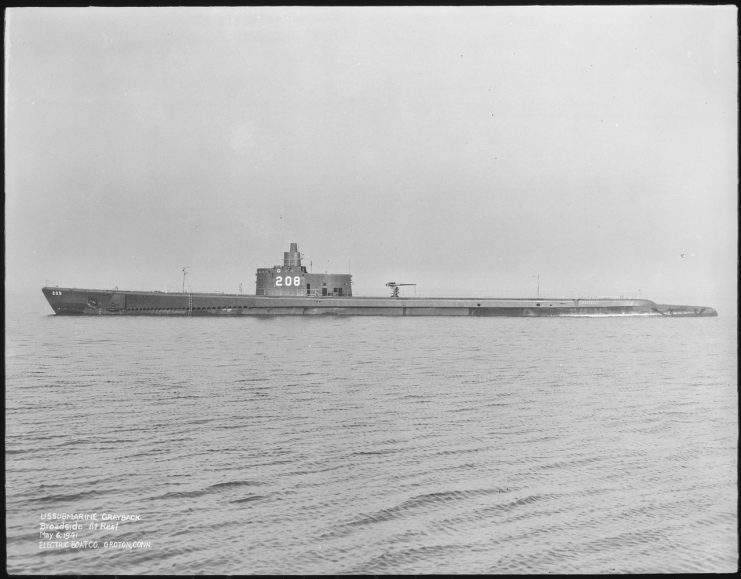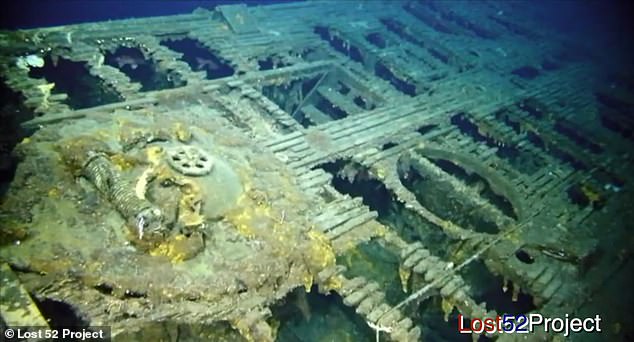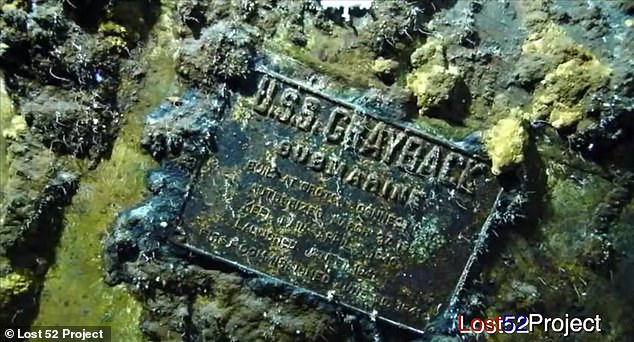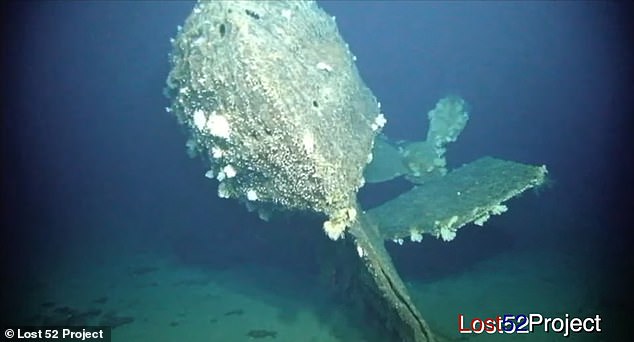Thanks to a Japanese amateur researcher, the wreck of the USS Grayback has been located off the coast of Okinawa, Japan, 75 years after the submarine mysteriously went missing in March 1944.
Wartime exploits
The USS Grayback SS-208 was launched on 30th June 1941 and attached to the Atlantic Fleet. When the US entered the war, she sailed for the Pacific on the 12th January 1942.
While patrolling the Pacific and the South China Sea, she was incredibly successful in hunting enemy shipping.

Not only was she successful at her primary purpose of sinking enemy ships, but she also fulfilled other roles. In January 1943, she served as the beacon ship for the naval bombardment of Munda Bay.
While accomplishing this task, her captain was made aware that six airmen from a crashed B-26 bomber were stuck on the island awaiting rescue.

The crew of the Grayback was determined to rescue the airmen, and two crew members went ashore on the 5th January, while the submarine submerged to avoid detection.
The submariners found the stranded airmen and found that three of the six were injured.
That night the Grayback resurfaced, and the small boat with the airmen and the two submariners made it safely back to the submarine. The commanding officer of the Grayback, Cmdr. Edward C. Stephan was awarded the Navy Cross for this rescue.
In 1943 she joined a very successful Submarine Wolf Pack in the company of SS-225 Cero and SS-235 Shad.
Final Patrol
On the 28th January 1944, the USS Grayback with her 80 strong crew, left on their 10th Combat Mission from Pearl Harbour. She was due to return to Midway by the 7th March 1944, but she failed to return.

She was one of the most successful submarines during the war. She was ranked 20th in terms of tonnage sunk with a total of 63,835 tons and 24th in terms of the number of ships sunk with a total of 14.
After the war
The US Navy used Japanese Military Records to try and piece together what may have happened to the submarines that went missing, including the USS Grayback.
The records from 1949 show that the US authorities believed that the USS Grayback sank approximately 100 miles south-east of Okinawa in the open ocean. Despite this, the wreckage of the submarine was never located, and the 80 crew were listed as missing.
Lost 52 Project
The Lost 52 Project is a group of people that are dedicated to finding the 52 submarines from the US Navy that were lost during WWII and never located.
Yutaka Iwasaki, a Japanese amateur researcher, had delved into the records of the Imperial Japanese Navy at the Navy base at Sasebo. There he found a recording of the radio transmissions from the 27th February 1944.
The recording revealed that on that day, a Nakajima B5N bomber had dropped a 500-pound bomb onto a submarine that was on the surface. The submarine exploded and sank without a trace. The aircraft saw no survivors on the surface.
The recording included the coordinates of the location of the submarine. Iwasaki found that the coordinates on the tape did not match the US Navy coordinates.
It seemed that when the translation was initially done in 1949, the last known latitude and longitude of the USS Grayback was mistranslated or incorrectly recorded by one digit, resulting in the location of the submarine being wrong by 100 miles.

After Iwasaki found the discrepancy, an expedition led by Project 52’s Tim Taylor, used drones to search the seabed to physically locate the wreckage based on the new set of coordinates.
She was found 50 nautical miles south of Okinawa, lying at a depth of 1,400 feet.
Gone Viral: Bugler Stands & Plays Taps in the Rain, Tribute to WWII Nurse
Finding the remains of the submarine has solved another of the mysteries of World War II and has given closure to the 80 families that waited 75 years to know where their loved ones were.
